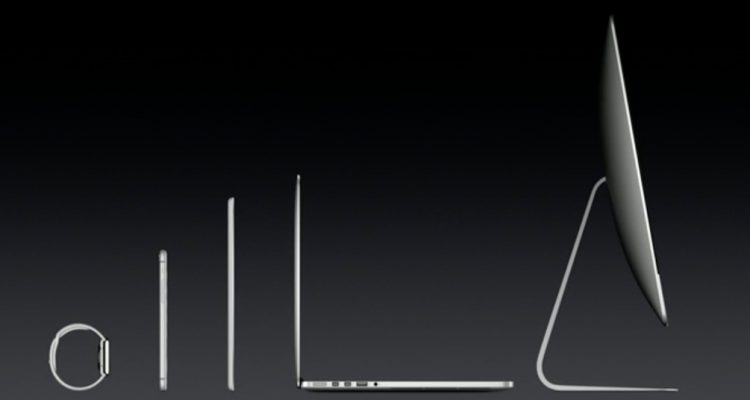iPad: Pushing the MacBook forward
Ever since the iPad came out, there has been a growing question: Will the iPad replace the MacBook? Over two years ago, I put together my thoughts just after the third generation iPad Pro was announced.
Everyone is expecting iPad to replace laptops at some point in the future. But what exactly are they wanting?
It seems the expectation is that, if iPad is the future of computing, that we’ll eventually not need laptops (and maybe desktops) because iPads will replace the PC category for what we do. Thus, iPads need to eventually do everything current PCs can do and more.
As the iPad has become more capable, it seems to move closer to replacing the laptop.
However, Apple has said that their goal is not to replace the laptop. In that post, I quoted Phil Schiller in a 60 Minutes interview:
Charlie Rose: Is there danger of one product cannibalizing the other product?
Phil Schiller: It’s not a danger, it’s almost by design. You need each of these products to try to fight for their space, their time with you. The iPhone has to become so great that you don’t know why you want an iPad. The iPad has to be so great that you don’t know why you why you want a notebook. The notebook has to be so great, you don’t know why you want a desktop. Each one’s job is to compete with the other ones.
Will the iPad rise to tear down the MacBook, replacing it as the portable computer in Apple’s line up? Schiller’s words seem to be a resounding no. This, however, leaves us in an interesting quandary.
Strong Competition
For years, many have seen the iPad gain new features and come closer to being a laptop replacement. For some, it already has, replacing cheap PC laptops (or even MacBook Airs) used for email and browsing. The addition of the Magic Keyboard has made that an even better option than before.
This year, though, we’re facing something that we haven’t seen yet: The iPad line is on par with the latest Mac’s processing capabilities.
In November, Apple announced their new line of Macs running their own Apple Silicon. The M1 chip, based on the A14 (found in iPhone 12 and the 4th generation iPad Air), has brought increased battery life and performance to Apple’s lower-end Macs. The A14X, likely closer in performance to the M1, is said to be coming in the soon-to-be-released iPad Pros.
If that is true, we’ve now got an interesting product line up. We have the iPad Pro which, when paired with the Magic Keyboard, gives you a touch-first interface in a slim package that also provides great support for cursor and keyboard input. On the other, we have the MacBook Air, giving you a cursor/indirect-input-first interface without touch, also in a relatively slim package. However, inside, they’re both virtually identical: Whether running an M1 or an A14X, both are just as powerful, just as capable, just as performant.
The differences are few: One has touch, one does not. One runs macOS, the other runs iPadOS (essentially iOS with a different name). And… that’s about it. Sure, you have some features like Spatial Audio or Face ID to consider, but those could easily come to a future M1X/M2 MacBook.
Schiller said, “Each one’s job is to compete with the other ones.”
At this point, we are looking at an iPad Pro that easily competes with and, in a few ways, exceeds the MacBook line.
What will Apple do: Let the iPad replace the MacBook portable? Or will Apple stick to what they’ve said all along and make the MacBook compete?
I’m hoping for the latter. If that ends up being true, Apple has some truly awesome MacBooks in their product pipeline. I can’t wait to see them.
